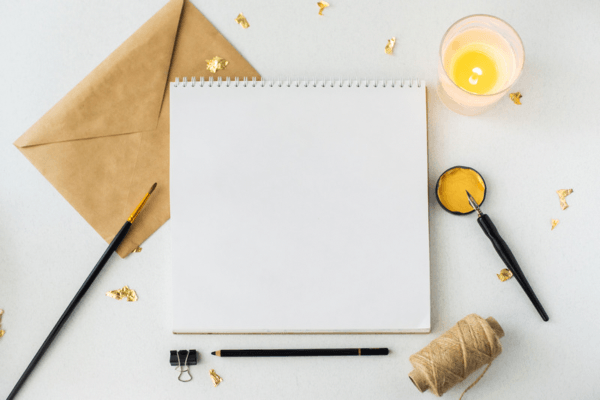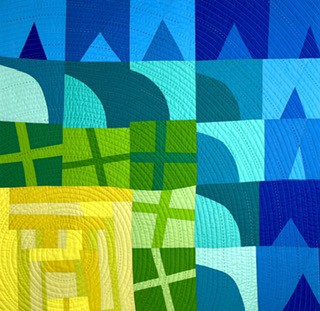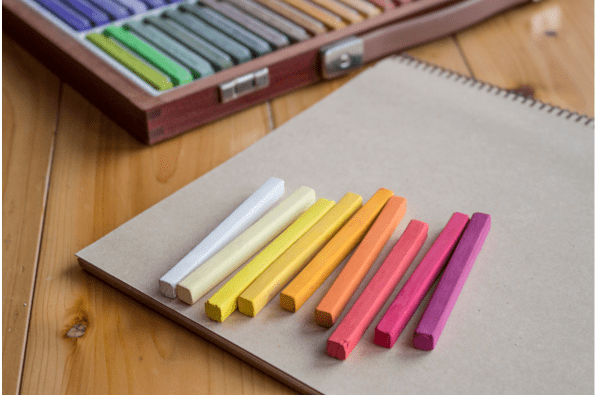Improvisation, whether it be in art or quilting, requires an open mind and a fresh perspective. As an artist or quilter, there are several different techniques that you can use to improve your improvisational skills. Mental exercises, modes of thought, and other techniques are ultimately useful for nurturing your improvisational skills.
Use a Sketchbook To Visualize What’s In Your Mind
Throughout the history of art, music, and even quilting, creative individuals have used sketchbooks to jot down their ideas. Quilters can benefit from sketchbooks. A sketchbook with grid lines can help the creative individual draw designs. The gridlines can help you visualize proportions and shapes. Sometimes, using a sketchbook without gridlines can let you come up with creative curves and different ideas to apply to your quilting techniques.

Classical music can help quilters and artists understand how to make the most out of their sketchbooks. Beethoven would start with one musical idea in his sketchbook. He would work on different versions of that musical idea by changing the pitch, duration, and rhythm and generate more musical ideas, ultimately putting together the musical material for the symphony. One way a sketchbook can help the quilter is to make different versions of a basic design idea. By changing the color and proportions in a basic idea, you will have the elements you need to craft your ideal quilt.
Learn How the Various Elements of Your Craft Interact With One Another To Create Proportion
In improvisational acting, the actors depend upon each other to spontaneously perform their scenes. They develop characters of their own and also study other characters in literature. Improv actors rely on their character’s likes, dislikes, personality, and mannerisms to guide their scene. By understanding how the character might react and interact with elements of the improvisational scene, the actor can create a more compelling improvisational scene.
In quilting, a good way to apply this tip is to work with the things that you like. You might want to pick two characters based upon shapes or colors that you like. By working with these different dimensions, you’ll be able to create proportions and shapes that are compelling and create a quilt that is cohesive and really shows the design that you had visualized when putting together your quilt.

Listen to Classical Music To Think About How To Improvise Color
Composers use a technique called orchestration to distribute their desired sounds to certain colors. According to research, certain musical instruments carry color connotations:
- Oboe: The oboe is associated with red and other related colors.
- Viola and violin: The viola and violin are associated with orange if they are bowed and yellow if they are played without the bow.
- Trumpet: The trumpet is associated with cyan and other lighter blue colors depending upon whether it is unmuted or played with other mutes.
- The saxophone and other woodwind instruments can be associated with purple and related colors.
Certain musical compositions are also suggestive to the listener of certain colors. For example, Mozart’s Flute Concerto #1 is associated with brighter colors, like yellow and orange. His Requiem in D-Minor is associated with darker purple and blue. Listening to classical music while quilting can help you improvise color schemes that you like.
Poetry and Improvisation
Slam poetry is a new and modern poetry technique that is often found in open mic settings. People get up and express their own story in narrative or rhyme. When you are at an open mic setting for slam poetry, you often will hear one poem that you feel that was meant especially for you. Participating in poetry readings and slam poetry can help you recognize when you are working with a particular type of pattern that was destined for that particular quilt.
Learn Improvisational Quilting
The techniques described above will help you unleash your improvisational skills. If you are new to quilting and sewing or have a deep background in these crafts, you might want to check out some different improvisational techniques in our online courses that will help you create exciting shapes, textures, and colors in each and every quilt that you make.
- The Power of Contrast: How Value Shapes Visual Impact in Quilts
- Improvisation in Quilting: Embracing the Unexpected as Creative Power
- The Global Revival of Textile Art — Latin American Voices Leading the Way
- Modern Quilters Showcase 63
- Free Janome Quilting Tutorials by Carolina Oneto: Projects, Patterns & Techniques


